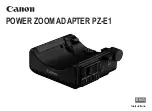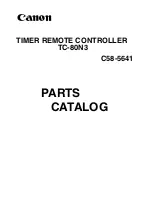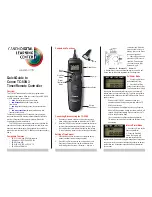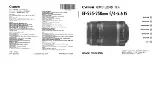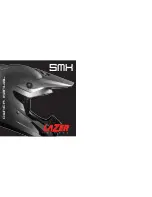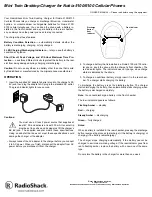
6/10/13 – 11
3
Carabiner.
The carabiner selected must:
be designed for use in arboriculture;
be self-closing;
be self-locking;
take three consecutive and deliberate motions to
unlock (“triple locking”);
be large enough to ensure that when configured,
no loading or interference with the gate occurs;
be secured such that no loading or interference
with the gate will occur.
The ISC HMS carabiner is an example of an
acceptable carabiner.
Harness.
The harness selected for use with the Rope
Wrench system must be adjusted to best fit the
climber’s body. Suspended work positioning
harnesses are recommended for use with the Rope
Wrench system. Harnesses with a chest attachment
point may be used with the Rope Wrench and
should be attached to the Tether Attachment Point
or to the tether itself. A chest attachment point
should not be load-bearing and is only meant to
keep the system upright and to keep slack out of the
system (see section titled Setting Up the Rope
Wrench System.)
Helmet, Boots, and Safety Glasses.
It is always
recommended that the climber wear a helmet,
boots, and safety glasses that have been
commercially manufactured for arboriculture.
Optional Equipment Recommendations
Other PPE.
Each climb will have its own unique set of
obstacles and hazards that should be well
understood before climbing begins. Use of other
PPE such as ear, face, hand, leg, and respiratory
protection will depend on the level of exposure of
the climber to these hazards.
Slack-Tending Pulley.
A pulley is not required, but is
highly recommended to assist in keeping slack out
of the system and moving the friction hitch up the
climbing rope during ascent. Use a pulley designed
for climbing systems, such as the ISC Micro Pulley.
Ascender(s).
Mechanical ascent devices such as foot
or hand ascenders are compatible with the Rope
Wrench. Be sure to check the manufacturer’s
instructions to ensure the climbing line you are
using is compatible with your ascender(s). Any time
more gear is added to any rope system it increases
the complexity and likelihood of disorder and
entanglement. Extra care must be taken to maintain
a clean and tidy system when using ascenders as
becoming entangled in gear can lead to catastrophe
especially when panicked.
Back-up Descent Device.
During a particularly long
descent, the life of the friction hitch can be
prolonged by incorporating the use of a back-up
descent device. A munter hitch or a figure eight may
be used above or below the friction hitch in place of
or in conjunction with the Rope Wrench. A back-up
descent device can also be used if the Rope
Wrench becomes incapacitated during the course of
the climb (e.g., if the climber loses the Slic pin.)
WARNING: USE A FRICTION HITCH
Always remember that the Rope Wrench is not a life
support device and even a system using ascenders in
conjunction with the Rope Wrench requires a properly
tied and functioning friction hitch. Failure to do so can
lead to serious injuries or death.
Standard Set-Up Instructions
NOTICE: REGARDING SUBSTITUTIONS
The following set-up instructions are based on the
equipment recommended in the previous section.
Substitutes to any of the equipment or methods
described herein are made at the sole risk of the
climber. Make sure the function and limitations of any
substitutions are well understood before deviating from
these instructions.
Step 1. Choosing a Time And Place
Every climbing location has an unlimited number of
potential obstacles and hazards. Even with a perfectly
rigged system and all the proper PPE, some conditions
can still pose a threat to a climber’s safety. Consider the
following when choosing a time and location for
climbing.
Environmental Conditions
Rain or moisture can lead to slipping.
Wind can affect stability and send debris toward
the climber.
Lightning can often strike trees.
Humidity can affect the function of equipment,
particularly the friction hitch.
Temperature can affect the function of equipment,
and affect the performance of the climber.












